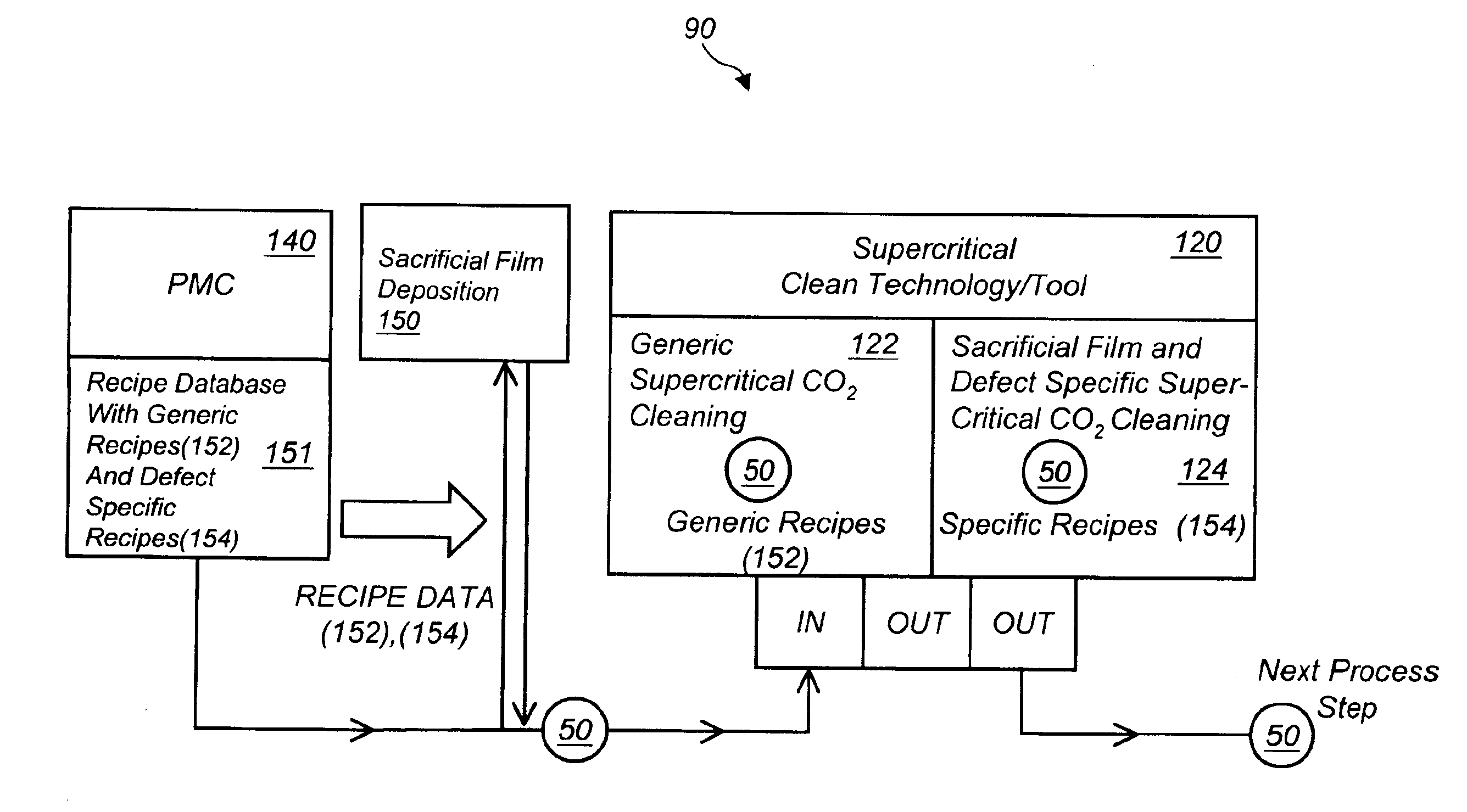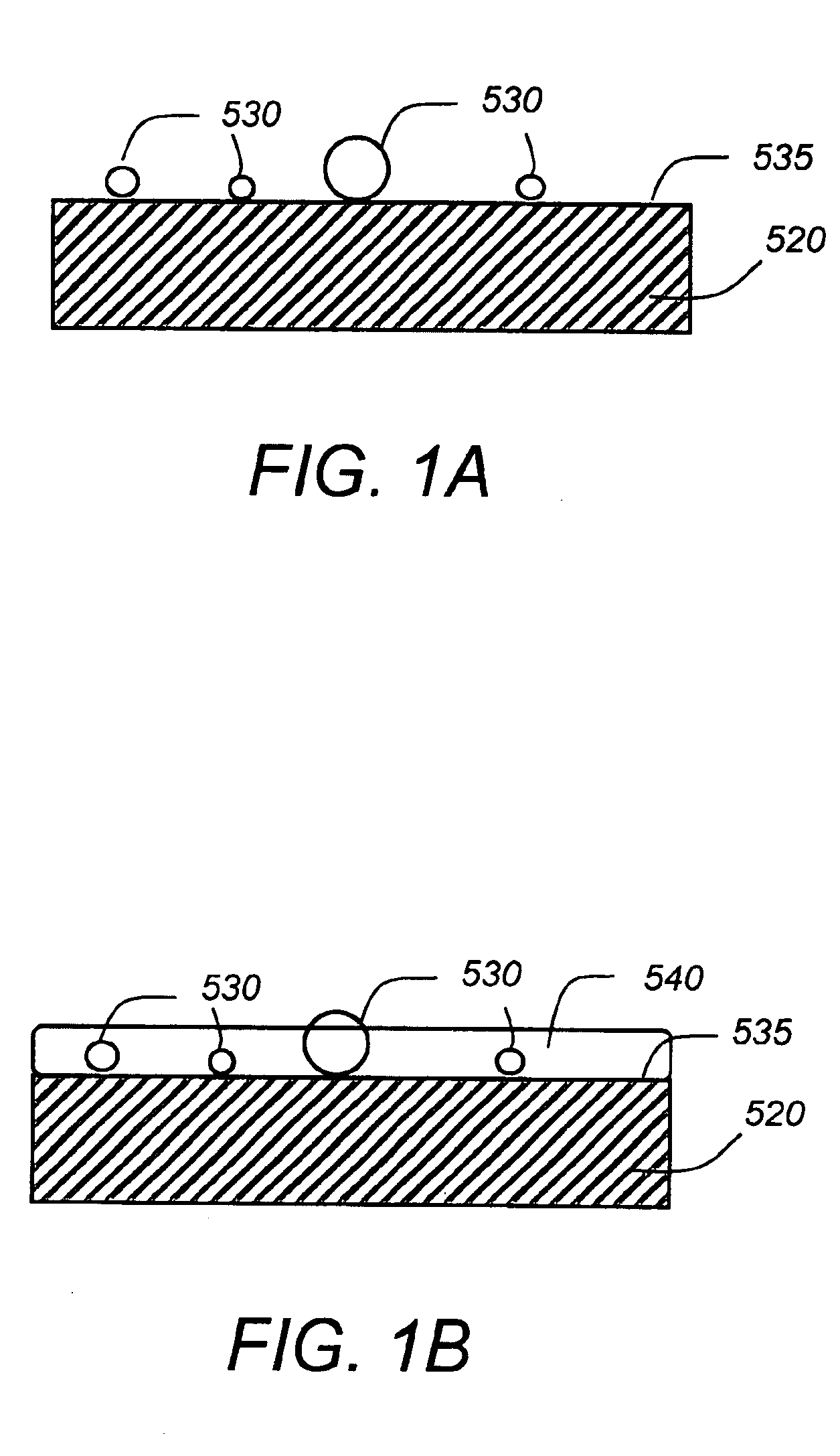Apparatus and method for semiconductor wafer cleaning
a technology of apparatus and semiconductor wafers, applied in the direction of cleaning hollow articles, cleaning using liquids, instruments, etc., can solve the problems of failure of ic circuitry, and the need to remove particulates for proper operation, etc., to achieve significant ic test yield increase, low defect level, and small footprint
- Summary
- Abstract
- Description
- Claims
- Application Information
AI Technical Summary
Benefits of technology
Problems solved by technology
Method used
Image
Examples
Embodiment Construction
Referring to FIGS. 1A-1D, a substrate 520 (having a surface 535) initially has particulate contaminants 530 of various sizes adherent to surface 535. A sacrificial film 540 is applied to surface 35. The solvent is evaporated, leaving a dry film (FIG. 1B). Substrate 520 with its contaminant particles 530 and sacrificial film 540 is placed in a supercritical. cleaning chamber 560 where at temperatures above 31° C. and pressure of 1072 psi, the liquid and gaseous phases of CO2 combine to form supercritical CO2 (SCCO2). Sacrificial film 540 and the particulate contaminants solvate within the SCCO2 and are evacuated into a low pressure chamber, where they become insoluble and are precipitated from the liquid CO2. The surface 535 is scanned for particles 530 remaining on surface 535 and the locations of stubborn particulate defects, if any, are recorded in a data file. The surface scanning may be performed by utilizing a scanning electron microscope—defect review tool 215 (SEM-DRT describ...
PUM
| Property | Measurement | Unit |
|---|---|---|
| Temperature | aaaaa | aaaaa |
| Fraction | aaaaa | aaaaa |
| Pressure | aaaaa | aaaaa |
Abstract
Description
Claims
Application Information
 Login to View More
Login to View More - R&D
- Intellectual Property
- Life Sciences
- Materials
- Tech Scout
- Unparalleled Data Quality
- Higher Quality Content
- 60% Fewer Hallucinations
Browse by: Latest US Patents, China's latest patents, Technical Efficacy Thesaurus, Application Domain, Technology Topic, Popular Technical Reports.
© 2025 PatSnap. All rights reserved.Legal|Privacy policy|Modern Slavery Act Transparency Statement|Sitemap|About US| Contact US: help@patsnap.com



